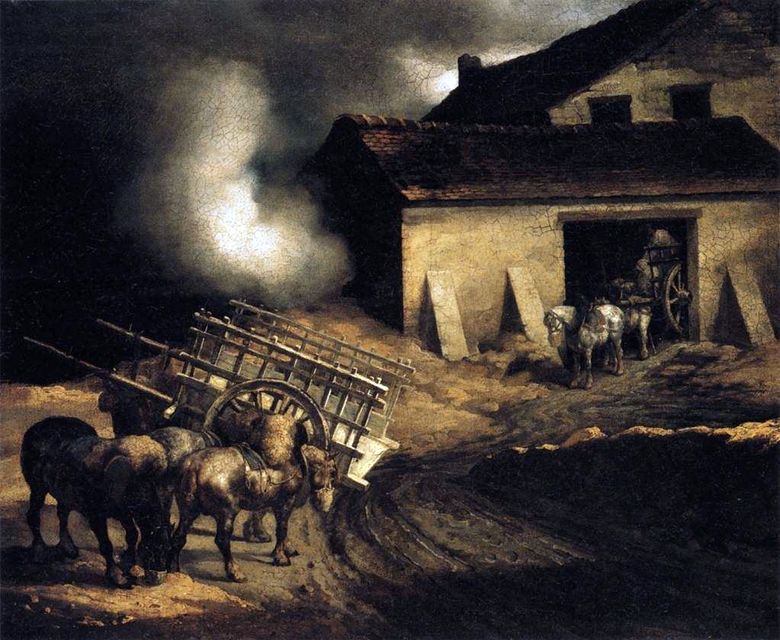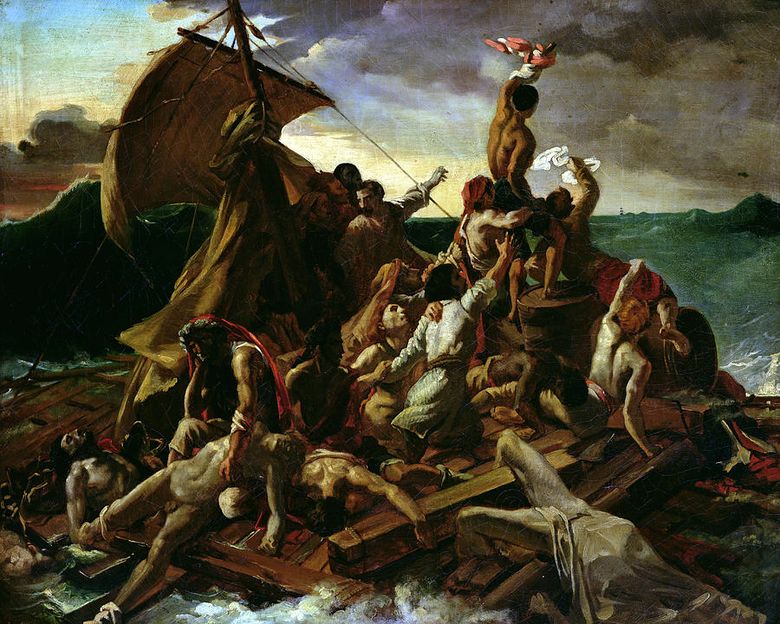
At first glance, the painting “The stove for gypsum burning” is devoid of attractiveness. Moreover, she amazes Gericault’s contemporaries with the “frank banality” of the presented scene. Nothing attracts the viewer’s eyes: neither horses pulled nor broken road, nor a village oven, which is covered by a cloud of white dust.
And the origin of this white patch is not entirely clear and not believable at all. Although, perhaps, the stove for gypsum burning is faulty? .. However, without this white cloud, the atmosphere of the picture would be quite different. The dust clubs give the composition an aura of mystery and even some dreamy dreaminess. The cloud can be perceived in different ways, especially if it is taken into account that it does not originate from this oven – maybe it is the same mysterious haze that is characteristic of the Baroque style masters, and maybe this smoke censers in the temples from the canvases to the religious The theme, which in his time so admired Gérico.
However, unlike these works, in which smoke was a secondary element of the composition, in “Ovens…” it is the main motive, symbolizing the volatility and transience of life and associated with the element of air. Everything else in the picture, as it were, contrasts in meaning with smoke, symbolizing the earthly, massive and eternal. In addition, a cloud of smoke is the only bright spot on the canvas, which visually “breaks through” a monotonously dark color. While the whole scene seems frozen, the smoke gives it dynamism and, going up, creates a powerful composite counterpoint.
A cloud of smoke quickly dissipates. A broken road leads down. Do not you think that the thoughts of death are asking themselves when you look at this sad, filled with the atmosphere of hopelessness picture. “The furnace for burning gypsum” – one of the last paintings of the artist. Soon after the end of work on her illness, Jericho rushes to bed, with which he will never rise again.
 The Jellyfish Raft by Theodore Gericault
The Jellyfish Raft by Theodore Gericault Four à gypse – Theodore Gericault
Four à gypse – Theodore Gericault Officer of the horse rangers of the Imperial Guard, going on the attack by Theodore Gericault
Officer of the horse rangers of the Imperial Guard, going on the attack by Theodore Gericault Five horses, rotated by groats, in the stables by Theodore Gericault
Five horses, rotated by groats, in the stables by Theodore Gericault Portrait of a Madman by Theodore Gericault
Portrait of a Madman by Theodore Gericault Radeau de Méduse – Theodore Gericault
Radeau de Méduse – Theodore Gericault Derby in Epsom by Theodore Gericault
Derby in Epsom by Theodore Gericault The head of a white horse by Theodore Gericault
The head of a white horse by Theodore Gericault